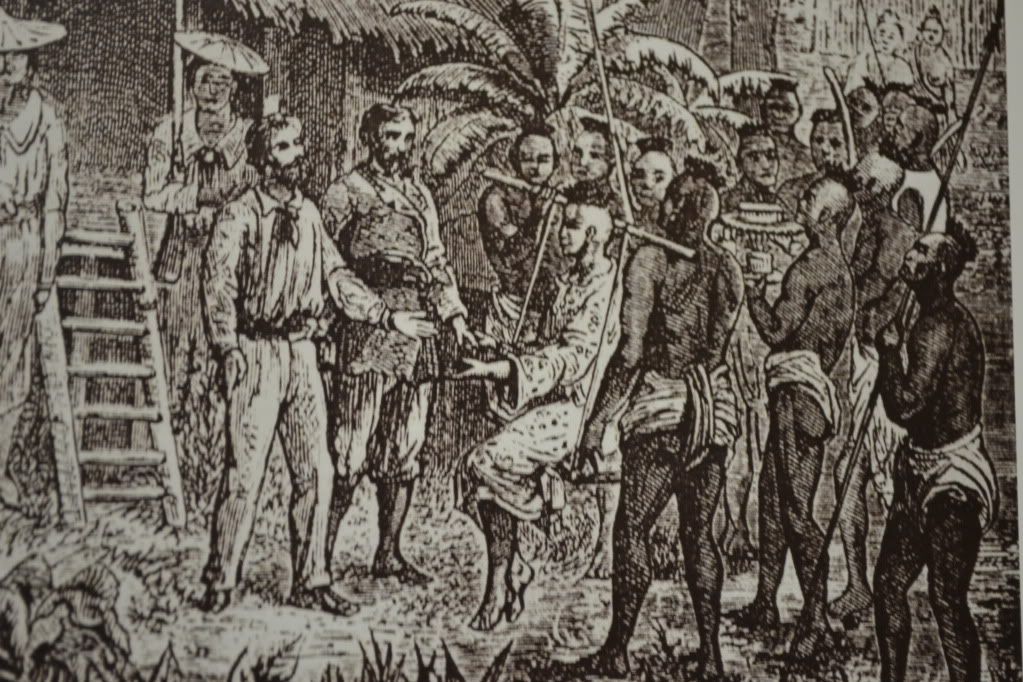Today, we're looking at 5 ways writers have described the country over the course of the last 30 years so you can start getting a sense of the contrast and options you have available to you.
Bear in mind, most of the books actually go on at length to expand their descriptions and histories, and this is not exhaustive of the options people have chosen. But I think there's a lot to consider in how a writer frames Laos in their introductory overview of the country.


For example, consider:
"Welcome, gentlemen, to the Kingdom of Lan Xang-The Land of a Million Elephants," Major Garrity began. "You have stepped through the looking glass into a magical place inhabited by a gentle race sadly trapped in a life-and-death struggle not of your making. Imagine, if you will, a comic opera by Gilbert and Sullivan, with splashes of blood." What came next was a lyrical description of the country and its people, a capsule version of Laotian history and an honest attempt to explain the convoluted, mad-hatter politics of the place."
-Christopher Robbins, The Ravens, 1987
"THE KINGDOM OF LAOS: In 1960, the Land of the Million Elephants and the White Parasol, as Laos called itself, was either rich or poor, depending on how you looked at it. The kingdom had valuable forests and minerals, but few roads for reaching them. It was rich spiritually, with both Buddhism and animist religions, but in economic terms it was one of the poorest countries in the world. It was richest of all in people, with more than fifty different ethnic groups, each with their own cultures and traditions, but they lacked a common language. Some lived such isolated lives that they had never heard of the central government, and most felt loyalty only to their village or tribe."
-Roger Warner, Out of Laos, 1996
"Laos is a ham-shaped, mountain-segmented country occupying a total area of 91,430 sq. miles, roughly the same size as Britain or the state of Wyoming. Entirely landlocked, Laos is approximately 600 miles long. Its widest point is the northwest. The southern panhandle of the country narrows to a width of as little as 160 kilometers at some points. Laos sits squarely between Thailand and Myanmar in the west and Vietnam to the east, sharing the northern border with Chinese province of Yunnan and its southern one with Cambodia. Approximately 70% of the country consists of mountains, highlands and plateaus."
-Stephen Mansfield, Culture Shock! Laos, 1997
"For them, it was one of the places in the world which came closest to idealistic concepts of 'earthly paradise', 'other Eden' or 'Shangri-La'. In the nineteenth-century scramble for colonies in Africa and elsewhere it might be said that the British, with their command of the sea, were able to secure most of the economically worthwhile countries such as Malaya, South Africa, East Africa and Nigeria, leaving the French mainly with vast areas of the Sahara desert. But the French were able to pick up some of the most idyllic and charming spots on earth, including Tahiti, Madagascar and Laos. The French view of Laos may have been unduly influenced by the experiences of young district officers who, when touring their district, would be offered the pick of a village's nubile young women as companion for the night. But if the beauty and charm of its women were a major attraction, Laos had much more to offer. The landscape of forest-clad mountains and vertical limestone cliffs was often spectacular. The sparse population was mostly scattered in small villages of houses on stilts surrounded by rice fields where, in the absence of modern development, the people continued their tranquil way of life as they had done for centuries. In the few towns the all-pervading Buddhist religion, with its temples, pagodas and orange-robed monks imposed an aura of peace and tranquility. While the administrative capital of Vientiane was not a particularly attractive town, the royal capital of Luang Prabang, as I was to discover later, could have served as the setting for a Hollywood remake of Lost Horizon. And the medieval trappings of the ancient Lao monarchy, supported by a full cast of princes and other dignitaries, seemed to belong to a fairy tale rather than the modern world."
-Mervyn Brown, War In Shangri-La: A Memoir of Civil War in Laos, 2001
"Laos is a small country, about the size of Great Britain, bordered by the People's Republic of China to the northwest, Vietnam to the east and southeast, Cambodia to the south, Thailand to the south and west, and Myanmar (formerly Burma) to the west, just north of Thailand. Today, over six million people live in Laos, but the country had three and a half million inhabitants in 1973, the year my story begins. The lowland Lao, who make up the majority of the population, live in the rich plains and valleys of the Mekong River and its tributaries. They are believed to have migrated to the area in the seventh century A.D. from southwest China. They initially established communities based on the cultivation of paddy rice, although their farming techniques gradually diversified to include a wide variety of fruits and vegetables and the raising of livestock. Most Laotians practice the Theravada form of Buddhism."
-Bounsang Khamkeo, I Little Slave, 2006
No comments:
Post a Comment